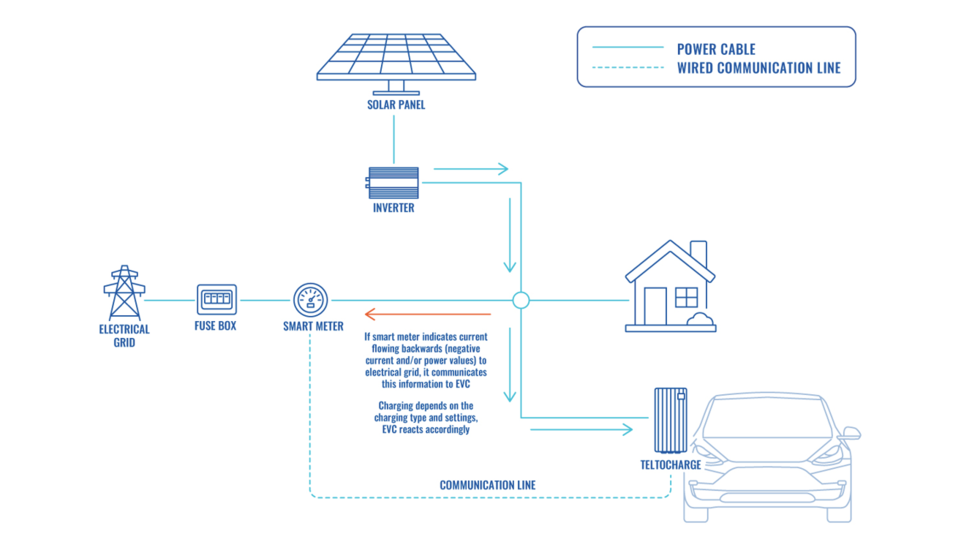Difference between revisions of "Solar integration EVC16"
From Wiki
| Line 5: | Line 5: | ||
*When the meter detects surplus energy, it relays this information to the charger. Based on the charger's internal configurations, it will determine whether to initiate the charging process or not. It is important to note that this process depends on the specific configurations set within the charger. | *When the meter detects surplus energy, it relays this information to the charger. Based on the charger's internal configurations, it will determine whether to initiate the charging process or not. It is important to note that this process depends on the specific configurations set within the charger. | ||
| − | [[File:Solar integration overview.png|center|frameless|953x953px]] | + | [[File:Solar integration overview.png|center|frameless|953x953px]]'''Solar Integration with CT''' |
Revision as of 10:29, 9 April 2024
Main Page > TeltoCharge > Advanced Topics > Solar integration EVC16Physical installation
- To ensure proper solar integration functionality, it is essential to begin with the correct physical installation. This involves having a smart energy meter installed in the electric circuit that possesses the necessary communication functionality and is included in our energy meter list. The meter plays a crucial role in detecting negative current flow, indicating when energy consumption is lower than solar generation, and feeding it back into the electrical grid. For effective communication, the charger must be interconnected with the meter.
- When the meter detects surplus energy, it relays this information to the charger. Based on the charger's internal configurations, it will determine whether to initiate the charging process or not. It is important to note that this process depends on the specific configurations set within the charger.
